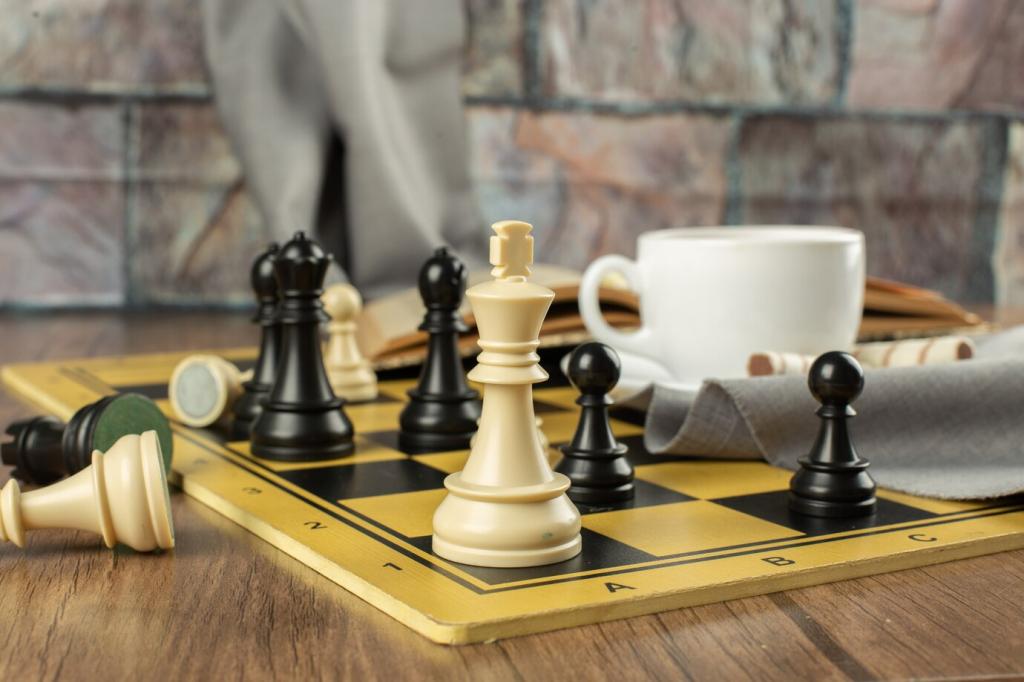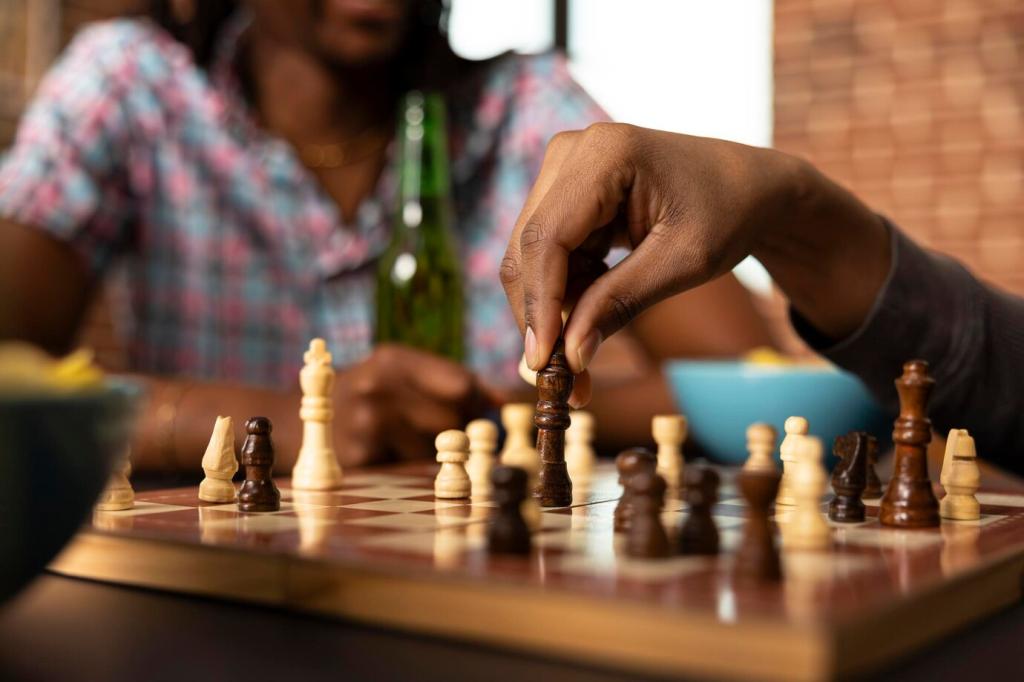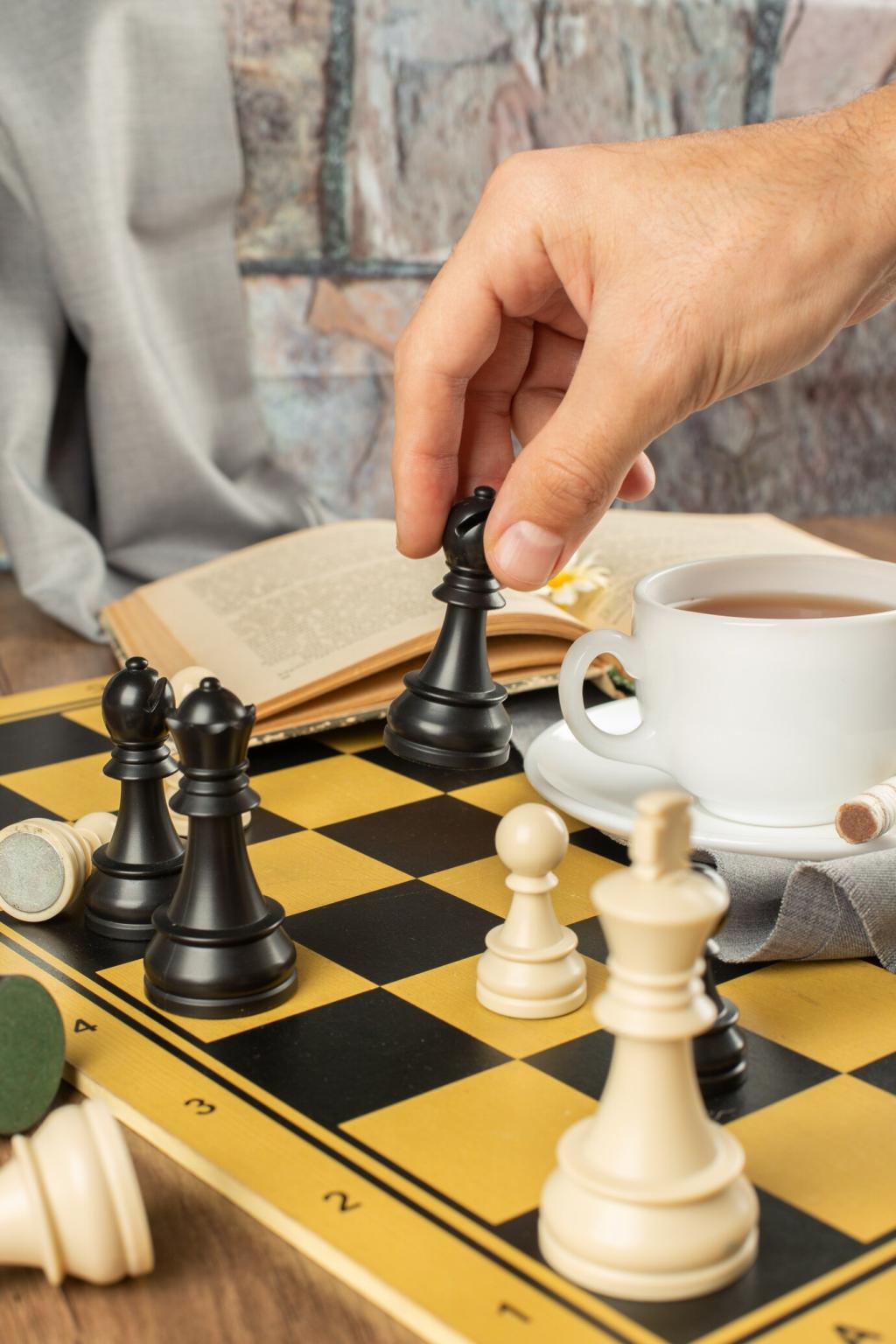Hypermodernism: Rethinking Chess Strategy
Today’s chosen theme: Hypermodernism: Rethinking Chess Strategy. Step into a mindset that invites the opponent to build an impressive center—only to undermine it with precision, patience, and creative counterplay. Join the discussion, share your games, and subscribe for ongoing hypermodern insights.
The Revolt Against the Classical Center
Classical teaching urged immediate occupation of the center with pawns. Hypermodernism invites the opponent to advance there, then attacks from a distance using pieces and timely pawn breaks. How comfortable are you ceding space early to strike back later?
Key Voices: Nimzowitsch, Réti, Tartakower
Aron Nimzowitsch’s ideas on overprotection and blockade, Réti’s embrace of fianchettos, and Tartakower’s wit shaped this movement. Their games proved that restraint and indirect pressure can outclass brute-force central occupation. Explore their classics, then comment with your favorite example.
Core Principles You Can Apply Today
Control the center without occupying it, provoke overextension, and maintain flexibility. Delay pawn commitments until you can accurately strike with breaks that disrupt structure. Try these in your next game, annotate the critical moment, and post your reflections.



Opening Repertoires That Embody Hypermodernism
Black allows a broad white center, then strikes with …e5 or …c5, and a kingside storm often follows. Space for White becomes a target for Black’s pieces. Share a King’s Indian moment when a well-timed break flipped the evaluation.
Opening Repertoires That Embody Hypermodernism
In the Grünfeld, Black concedes d5 control to pressure White’s center with piece activity and pawn hits on c5 and e5. The bishop on g7 breathes fire down the long diagonal. Which Grünfeld model game most inspired your preparation?

Targeted Pawn Breaks: Timing Over Temptation
Strikes like …c5, …e5, or …f5, and for White, c4 or e4, matter most when they shatter coordination. Wait until your pieces are harmonized. Share a game where one accurate break changed the entire character of the position.
Prophylaxis and Flexibility
Anticipate your opponent’s plan and reduce its bite before it starts. Hypermodern play thrives on flexible structures, keeping options open. Which prophylactic move have you underrated? Post a position where a quiet move outperformed a tempting tactic.
Anecdote: The Day a Pawn Chain Collapsed
I once allowed a wide enemy center, then placed my knights on flexible outposts, stalling advances. One break on c5 cracked the base, their proud chain sagged, and tactics rained. Have you felt that satisfying snap when restraint finally pays off?
What the Numbers Say
Database trends reveal resilient results for hypermodern setups across levels. Positions once labeled “passive” often show rich counterplay and resourcefulness. Have you compared engine preferences between early center grabs and restrained fianchetto structures in your repertoire?
Engine-Assisted Preparation
Use engines to test break timing, but keep human plans central: piece harmony, weak-square creation, and long-diagonal pressure. Build small trees of positions with clear ideas. Share a prep line where engine guidance sharpened your hypermodern strike.
Alternate days for classic hypermodern games, tactical exercises from fianchetto structures, and endgames emphasizing blockade. Track critical decisions and missed breaks. Post your schedule and we’ll refine it together for sustainable improvement.
Training to Think Hypermodern
Before moving, name three candidate breaks and visualize opponent replies. Ask: what square gets weaker, which file opens, which piece improves? Share a position diagram and your candidate tree to get community feedback.
Training to Think Hypermodern
Inviting the Center Without Fear
It feels risky to concede space. Reframe it as gathering tension. Your pieces whisper threats from afar while pawns wait for a precise release. Tell us how you manage nerves when the board looks cramped yet full of energy.
Patience as a Weapon
Delay gratification; make your opponent earn every square. When their center grows complacent, your counterplay becomes devastating. Which mindfulness techniques help you hold back a flashy but premature break over the truly decisive one?
Story: From Blitz Meltdown to Calm Counterplay
In blitz, I once panicked against a massive center and lashed out. Next day, I replayed calmly: improved knight, tucked king, then broke. Patience turned chaos into clarity. Share your transformation moment from impulse to intention.
Drop a PGN featuring a delayed break or long-diagonal squeeze. Highlight a moment where you resisted occupying the center. We’ll analyze and celebrate the turning points together.
